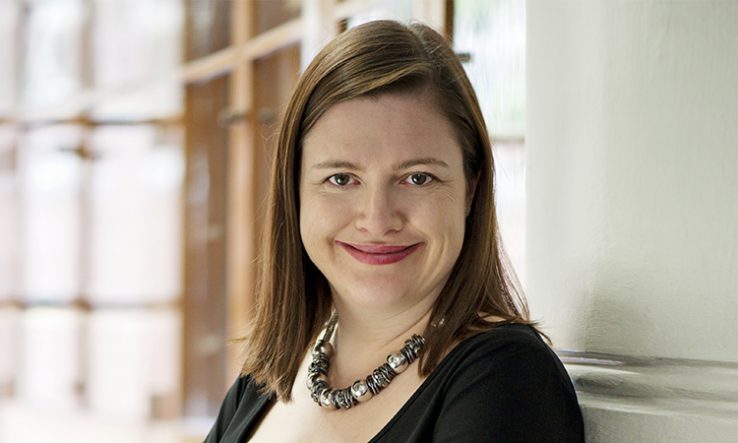
Image: IPAS institute for photonics & advanced sensing [CC BY 2.0], via Wikimedia Commons
Chief defence scientist outlines role of defence forces in providing face shields and invasive ventilators
Physicist Tanya Monro, Australia’s chief defence scientist, has outlined the major role played by defence force engineers and data scientists in the nation’s rapid research response to the Covid-19 pandemic.
Speaking at the National Press Club in Canberra, Monro said defence scientists were involved in critical data modelling programmes to forecast the severity and transmission of the virus. Their collaborative research included determining how long it could survive on banknotes.
Defence science research teams have also worked with universities and industry to design medical equipment for Australia’s hospitals.
“In late March, we established a rapid-response group to help increase domestic stocks of invasive ventilators. Simply put, invasive ventilation is the use of a tube to support patients who are critically ill and can no longer breathe on their own,” she said.
“Within a space of three weeks, our engineers designed a device which can convert existing non-invasive ventilators to perform as invasive ventilators. This involved fast-failing a number of prototypes and testing their safety in partnership with university researchers and medical professionals.”
Monro said defence engineers worked with Axiom Precision Manufacturing, a South Australian company, to produce face shields for frontline hospital staff.
“Defence designed and prototyped the face shields using 3D printing and Axiom is now mass-producing them using injection moulding. The first batch of 600 face shields went to South Australian hospitals in April for evaluation,” she said.
“They’re cheaper than imported face shields and, I’m told, more comfortable. A further 4,000 face shields are now being produced.”
Defence scientists were also engaged in vital research “during the horrendous 2019-20 bushfire season”.
“At the peak of Operation Bushfire Assist, more than 6,500 servicemen and women—including about 3,000 reservists—supported relief, response and recovery efforts across five states and territories. What Australians may not have appreciated was that defence science was also playing a part,” she said.
“Over the Kangaroo Island and Gippsland fires, a defence experimentation airborne platform aircraft was undertaking missions using the country’s most sophisticated sensors and cameras. Flying above the burning landscape, the crew were using the aircraft’s equipment to look through the smoke and provide information on fire intensity, movement and damage to other firefighting aircraft and ground emergency responders.”
Monro was giving the annual Ralph Slatyer address, which honours the memory and legacy of one of Australia’s most influential federal science advisers.